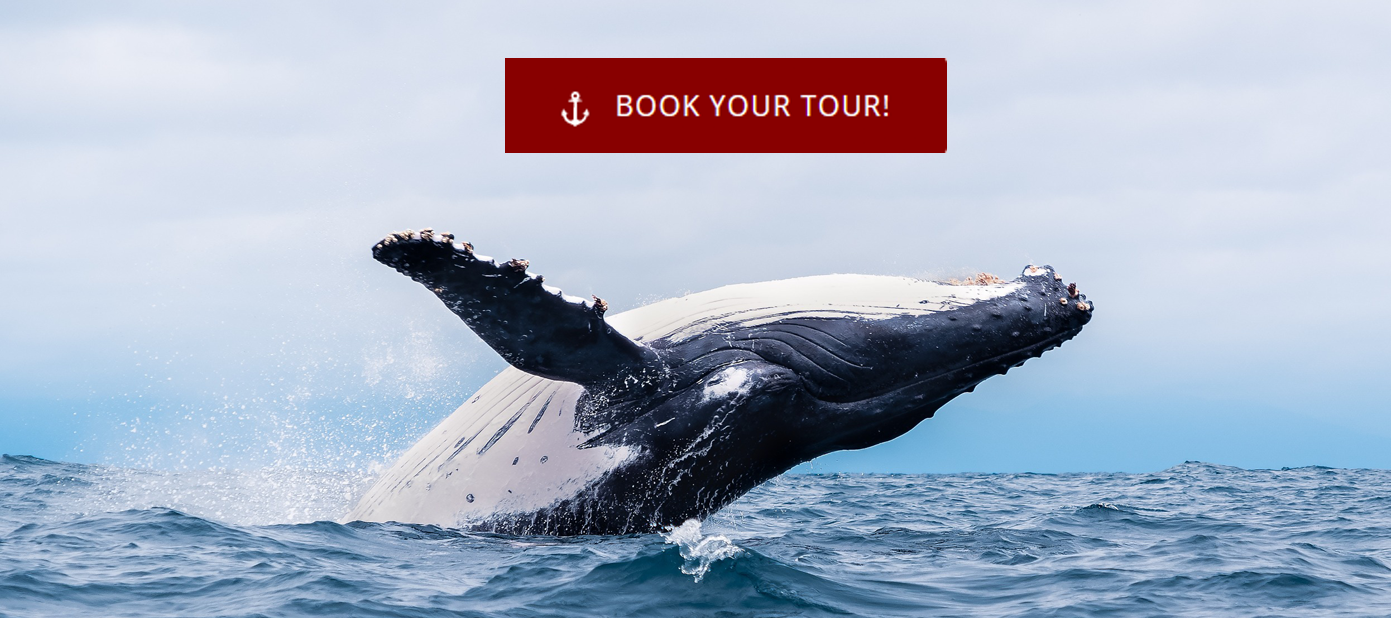12 Facts About Blue Whales: The Largest Animal That Ever Lived

The ocean has its share of fascinating wildlife. The blue whale is the largest animal known to live on earth, even larger than the dinosaurs. Here’s how to imagine the size of a blue whale: It’s as long as three back-to-back school buses, around 100 feet—that’s a 10-story building. The average weight of a blue whale is around 250,000 pounds, or the equivalent of 30 adult African bush elephants. Here’s more information about the blue whale.
Blue Whale Profile
Herman Melville refers to the blue whale in “Moby Dick” as ‘sulfur bottom’ because the blue whale has a yellow appearance on its underside. The skin is greyish-blue, but it will appear blue underwater. These whales have two blowholes that can spray water up to 40 feet in the air. Blue whales are solitary creatures but can be found in pairs and sometimes in pods of 50 or more whales. They don’t often get close to the shore, preferring deeper waters in the ocean.
Blue Whale Overview
The whale species has many varieties, some of which come to the San Diego Bay area. One of the most popular questions is about the blue whale vs gray whale. The most significant difference between the two is the size. A blue whale can be up to three times the size of a gray whale. You’re more likely to spot both of these whales in the winter months when they migrate to be closer to the equator for warm waters to give birth. You’re likelier to see a gray whale on a whale-watching tour because they are more populous than the blue whale. 
12 Facts About Blue Whales You Didn’t Know
The blue whale is known for its size. Here are some interesting facts to share.
- The blue whale’s tongue can weigh as much as an elephant’s. Its heart can weigh around 400 pounds.
- A baby could crawl through the whale’s major heart vessel because it’s that big.
- The blue whale’s pregnancy lasts 10 to 12 months. When calves are born, they weigh over 4 tons, 8,800 pounds. The calf will gain about 200 pounds a day until it is weaned.
- Not only are blue whales the most enormous creatures on earth, but they are also the loudest. The call of a blue whale can reach 180 decibels, which can be heard up to 1,000 miles away.
- Blue whales eat up to 9,000 pounds of krill daily, increasing during the summer feeding season.
- Blue whales prefer spending summers in the polar regions. They spend winter in the waters of the equator.
- Blue whales typically travel at five miles per hour, but they can get up to 20 miles per hour when required.
- Blue whales can live up to 100 years, but their average life span is between 80 and 90 years.
- Before the 20th century, blue whales were plentiful. Whaling in the 1900s has dwindled the population so much that the species is now considered endangered. Climate change and pollution make their future uncertain.
- Calves will stay with a mother for about eight months after birth. They drink about 250 liters of milk each day.
- Blue whales don’t have many predators. They are more likely to be injured or die from an impact with an ocean vessel because the number of ships on the ocean keeps increasing.
- Between 1900 and 1966, over 350,000 blue whales were hunted and killed in the Southern Hemisphere.
Whales of all kinds are one of the most fascinating animals in the ocean. Learn more about whales and the ocean’s ecosystem during a whale-watching tour. Reserve your place now to take the day trip of a lifetime.
